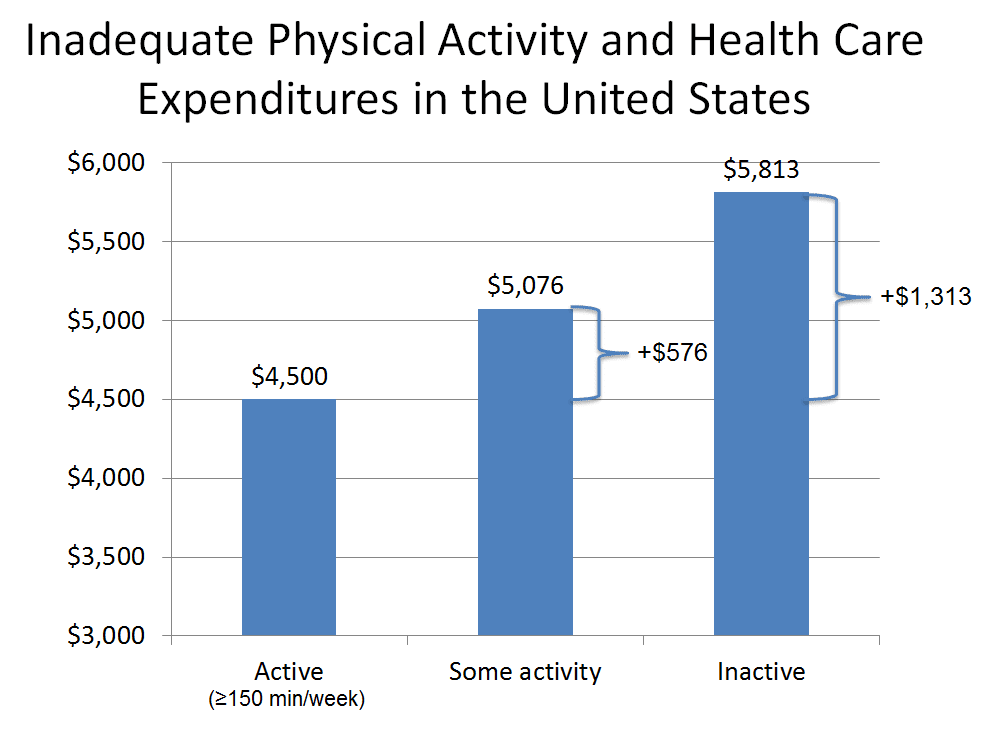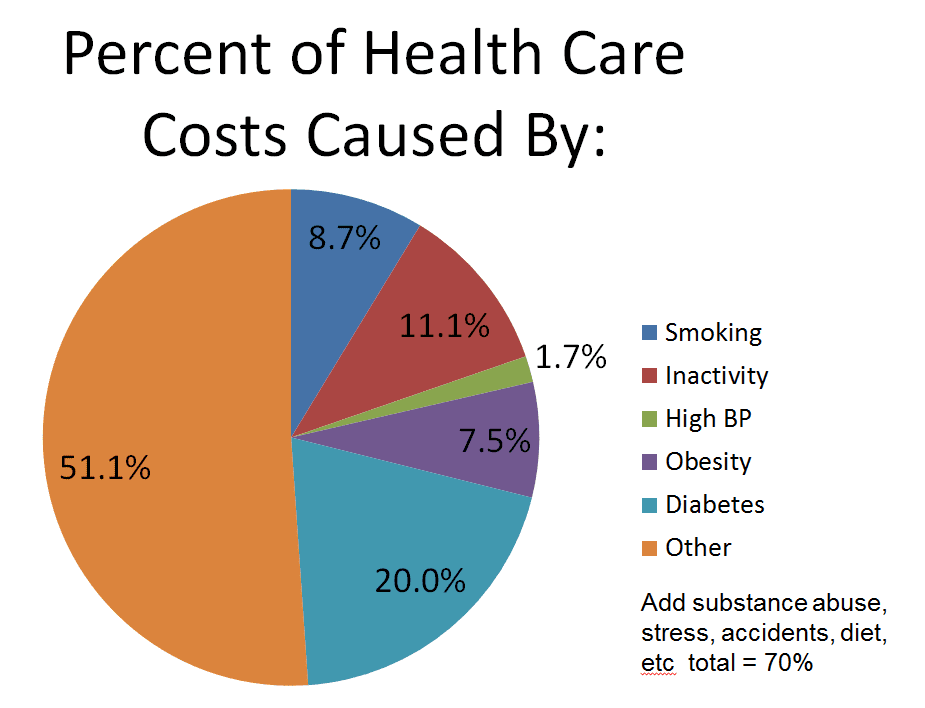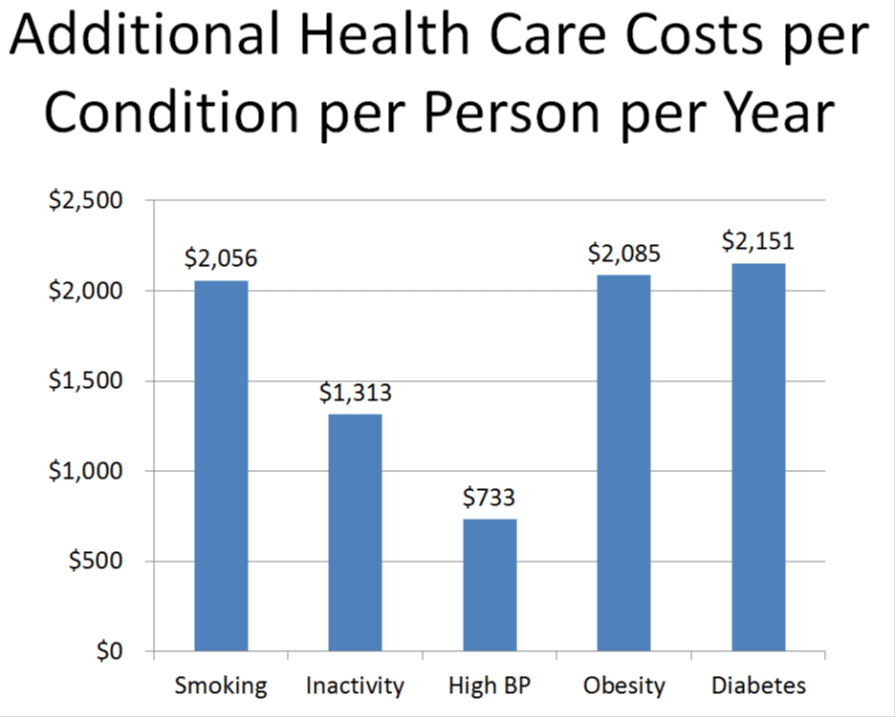Do Corporate Wellness Programs Work?
Investing in a company wellness program above and beyond basic insurance may have you wondering do corporate wellness programs work? There are hundreds of published research studies that prove corporate wellness programs can:
- Help employees eat healthy and be active
- Reduce elevated employee health risks
- Reduce the need for medical care
- Improve employee morale
- Increase employee productivity
- Improve employee recruitment and retention
One of the main reasons corporate wellbeing programs exist is to help reduce healthcare costs. But do corporate wellness programs work? Today there is more scientific evidence than ever to support the ability of corporate wellness programs to improve employee health, reduce elevated health risks, and reduce healthcare costs.

These epidemiology studies use population databases to look at the relationships between health behaviors and how they are reducing healthcare costs.
They all report that unhealthy behaviors and elevated health risks are directly related to elevated health care costs. Just like the research demonstrating the dangers of cigarette smoking, few of these studies are randomized clinical trials.
However, the evidence reveals that most of our healthcare costs are directly related to unhealthy lifestyle choices. To understand how wellness programs reduce healthcare costs it’s important to understand how our health behaviors are directly linked to the cost of health care.
The Science That Show how Corporate Wellness Programs Work to Reduce Healthcare Costs
In 2016, Centers for Disease Control published a paper connecting inadequate physical activity with healthcare costs. This is just one of dozens of similar papers. To fully comprehend how powerful these studies are let me show you briefly what they did.
The CDC researchers merged data from the National Health Interview Survey (2001-2010) and the Medical Expenditure Panel Survey. The national health interview survey uses face-to-face interviews to gather health information from individuals all around the United States.

The medical expenditure panel survey collects health care cost data from both federal agencies and private insurance companies. When these two data sets were merged it included information on over 58,000 individuals. The researchers then evaluated the difference in health care costs between different levels of physical activity.
Individuals who exercised more than 150 minutes per week spent about $4,500 per year on healthcare costs. Those who got between zero and 150 minutes of exercise a week spent $5,076 per year and those that didn’t exercise at all spent $5,813 per year.
This chart shows the difference in cost according to the different levels of physical activity. Compared to those are active, sedentary adults spend $1,313 more on health care every year.

For Real?
Critics will complain that this proves nothing because it is impossible to tell which came first—high health care costs or sedentary behavior. But in this study the researchers controlled for differences in age, sex, body mass index, socioeconomic status and other confounding factors.
More importantly, the physical activity data was gathered at year one but healthcare cost claims data wasn’t used until two years after that.
This study is just one of many that consistently shows that the less active you are the more you spend in healthcare costs. But this study also answers the question of how corporate wellness programs work to reduce healthcare costs. The study also determined that 11.1% of the total healthcare cost of the United States was directly related to inadequate physical activity.
Breaking It Down
Let’s do some math. Last year the United States spent $3 trillion on healthcare which means physical inactivity is directly responsible for $333 billion in health care costs ($3 trillion x 11.1%).
Using other epidemiology studies we can do same calculations for different unhealthy behaviors. There are enormous studies that have carefully looked at the healthcare costs associated with smoking, high blood pressure, obesity, and diabetes. Each of these unhealthy behaviors is highly associated with elevated health care costs.
From these various studies I’ve put together a pie chart showing the total percentage of our healthcare expenditure that is directly related to each of these unhealthy behaviors.

Diabetes alone explains 20% of our total healthcare cost. When we include substance abuse, stress, accidents and poor nutrition the total amount of our healthcare costs that can be explained by poor lifestyle behaviors equals almost 70%.
This means that of the $3 trillion we spend on healthcare 70% of that is due to individuals eating the wrong kinds of foods, not moving around enough, using tobacco, or having other unhealthy lifestyle behaviors.
This is actually great news because it suggests that we actually have some control over this enormous expense. If most of the cost of healthcare in the United States is due to poor lifestyle choices, then helping people adopt and maintain healthy behaviors will have a direct affect on our nation’s health care costs.
The Annual Cost of Unhealthy Behaviors
This last chart sums it up pretty well. If you compare the healthcare cost between smokers and non-smokers the difference is about $2,056 per person per year. The difference between those who are physically active and those who are not is about $1,313 per year.
Having high blood pressure costs an additional $733 per year, if you suffer from obesity, you’re likely to spend $2,085 more than those who do not. And if you have diabetes you’re going to spend $2,151 more than those who are diabetes free.

These connections are extremely well-documented. For the skeptics out there I have included a full list of the references I use to create these graphs. They are located at the bottom of this page.
The New England Journal of Medicine reported that for every 1% drop in total cholesterol, the risk of having a heart attack dropped by 2 to 3%. For every one point drop in elevated diastolic blood pressure, there is another 2 to 3% drop in heart disease risk.
As we change behaviors we reduce elevated health risks, we reduce the likelihood of developing chronic disease, and we essentially stay out of our expensive healthcare system. It pretty much looks like this:

How Corporate Wellness Programs Work to Reduce Healthcare Costs
This figure also tells us what corporate wellness programs need to do to work. It all starts with our unhealthy behaviors. Comprehensive wellness programs that follow effective behavior change strategies will improve employee health behaviors and will reduce elevated health risks.
These programs will also help employees maintain these healthy behaviors for the rest of their lives. This is a pretty tall order and quite frankly most wellness programs probably fail to produce these results.
This is why many claim that wellness programs do not work and are ineffective at reducing healthcare costs. Most of these claims are probably correct. About the most difficult thing we as humans can do is to change behaviors.
In order for a wellness program to have any effect on healthcare costs it must be successful at helping individuals adopt and maintain healthy behaviors. In an earlier blog I have shown the exact steps wellness programs need to take if they are to be successful at helping employees change behaviors. You can find that article here.
What This Looks Like in the Real World
Here is an example of how a worksite used these exact steps to reduce health care costs. In this example, the 3500 employee of Boise School District participated in the WellSteps solution.
Because the program was focused on behavior change, employees were able to adopt and maintain healthy behaviors. Consequently, elevated health risks improved and reductions in health care costs were achieved. Each of these program outcomes was carefully documented in publications in peer reviewed medical journals.
The epidemiology studies discussed above suggest that poor health behaviors are strongly linked with elevated health care costs. Now we have additional proof that wellness programs that change employee behavior can reduce health care costs.

Are employee wellness programs worth it?
Return on investment (ROI) evaluations show that good wellness programs save more money than they cost. The value on investment (VOI) is even larger. Wellness programs are popular because companies and employees like them. Here is proof they can even improve company stock price.
Why do corporate wellness programs fail?
Wellness programs fail when they:
- Lack strong leadership
- Don’t have a functioning wellness committee
- Don’t offer fun, valuable incentives
- Fail to integrate with other departments
- Have overly complicated programs
- Use sticks instead of carrots as incentives
- Don’t include spouses or significant others
- Don’t use technology like fitness trackers or wellness apps
Looking to explore why they work?
Next Steps
Need more convincing? Check out 7 Important Reasons to Offer Employee Well-being at Work. Then, reach out to our team for a free demo and discover how a customized corporate wellness program for your organization will bring many of the results and benefits we’ve discussed today. Click here to get started!

REFERENCES
Health, Life Expectancy, and Health Care Spending among the Elderly
http://www.nejm.org/doi/pdf/10.1056/NEJMsa020614
Inadequate Physical Activity and Health Care Expenditures in the United States
https://www.cdc.gov/nccdphp/dnpao/docs/carlson-physical-activity-and-healthcare-expenditures-final-508tagged.pdf
Higher Health Care Costs with Obesity
https://www.hsph.harvard.edu/obesity-prevention-source/obesity-consequences/economic/
Medical Cost of Overweight and Obesity
https://www.ncbi.nlm.nih.gov/pmc/articles/PMC2891924/
The Lifetime Cost of Diabetes and Its Implications for Diabetes Prevention
http://care.diabetesjournals.org/content/37/9/2557
Hypertension and Health Care Costs:
https://meps.ahrq.gov/data_files/publications/st404/stat404.shtml
Annual Healthcare Spending Attributable to Cigarette Smoking
https://www.ncbi.nlm.nih.gov/pmc/articles/PMC4603661/
Estimating the Cost of a Smoking Employee
http://tobaccocontrol.bmj.com/content/early/2013/05/25/tobaccocontrol-2012-050888